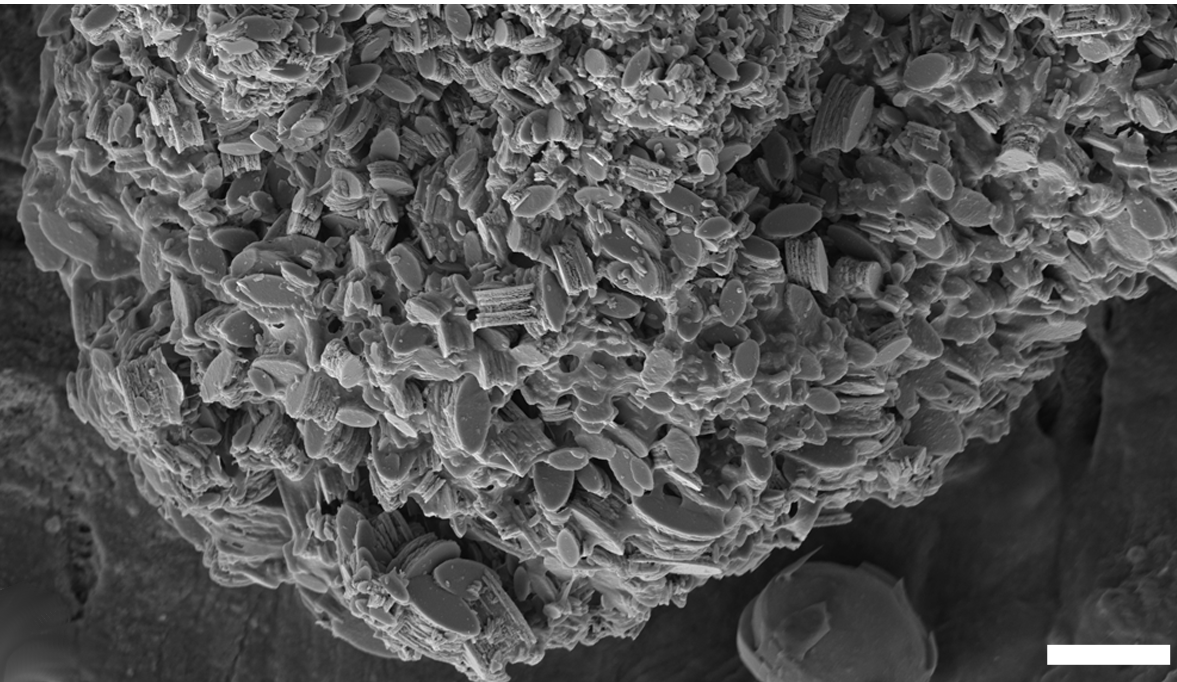Roxania utriculus
Shell description
The thick shell is external and white to whitish transparent in colour, with an elongate oval shape. The opening is wide and extends the length of the shell. The top of the shell (apex) is sunken and the spire is involute. An umbilical opening is present at the base of the shell. The shell sculpture consists of spiral grooves that are more prominent in the front and rear parts. Adult shells can reach nearly up to 1 cm.
Animal description
The body is grey-white in colour, usually yellowish-brown towards the top of the back. The head shield is lobed towards the back and there is no middle line. Side extensions of the foot (parapodial lobes) and an extension of the mantle under the snail (pallial lobe) are present (Thompson 1988).
Anatomy
The radula consists of 14 rows of teeth with one inner lateral tooth on each side and one central (rachidian) tooth. The outer lateral teeth are absent. The inner lateral teeth have a curved tip and a broad shovel like base, the inner edge may carry denticulation; the central tooth has two lobes that bears denticles. The radula is variable especially in the size and number of denticles on the teeth. This species does not have jaws. The gizzard is elongate rounded and not surrounded by muscle fibres. The gizzard does not hold true plates, but has folds with yellow, oval plate-like structures that are wedged together in the top. The foregut carries a crop that originates in the gizzard and has a thin tube that connects to the part of the foregut containing the radula (buccal mass). The crop has folds in the front and hind parts. The male reproductive system consists of an elongate penis chamber and a prostate with folds.
Ecology
Occurs on silt, sand, clay, gravel and mud at depths between 11–1500 m (Thompson 1988, Brattegard & Holthe 2001).
Geographical distribution
Occurs in Norway from Troms county and southward. Also found in Shetland, the Hebrides, the British Isles, the Canary Islands and the Mediterranean Sea (Thompson 1988, Brattegard & Holthe 2001).
References
Brattegard T og Holthe T (2001). Distribution of marine, benthic macroogranisms in Norway. Research report for DN-2001-3. Directorate for Nature Management.
Thompson TE (1988). Molluscs: Benthic Opisthobranchs. In: Brill EJ og Backhuys W. Leiden. Mollusca, Gastropoda: keys and notes for the identification of the species. Vol. 8. New York, Copenhagen, Cologne. 356 sider.







